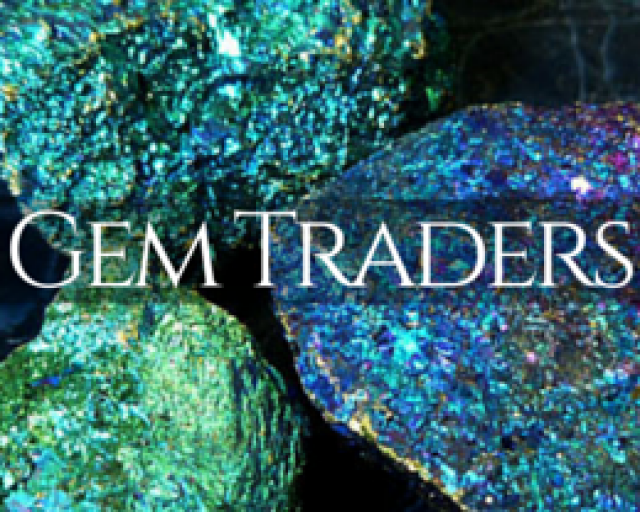Sie haben bei dieser Auktion nicht geboten.
244GRAMS PARCEL POLISHED ROUGH ZEBRA ROCK GG2047
- Artikelnummer
- Abmessungen (mm)
- x x mm
- Gewicht (cts)
- Certified Gemstones
- NEIN
- Farben
-
DESCRIPTION ZEBRA ROCK POLISHED
SOURCE WESTERN AUSTRALIA
SIZE LARGETS 55x40x10MM
PARCEL 10 PIECES AS PER IMAGE
This distinctive reddish-brown and white banded
ornamental stone from the East Kimberley, Western
Australia, has been known as zebra rock since its
discovery in 1924. Some of the original localities,
including one about 4.8km southwest of the former
Argyle Downs Station, are now submerged beneath
the dam waters of Lake Argyle, but there are others
which are still being exploited.
Zebra rock forms lenses and seams, some
extending for kilometres, within the Johnny Cake
Shale, which is of Late Precambrian age (around
670 million years old). The rock is an “argillite” or clay rock. It is largely made up of clay minerals but
also contains tiny angular fragments of quartz and mica flakes, and the mineral, hematite (an iron oxide),
which is the main iron-bearing mineral. Most of the clay is the common mineral kaolinite, which forms
during weathering of rocks (such as granite) containing feldspar and other aluminium silicates and can
be deposited as a sediment in water to eventually make a clay rock like a shale or mudstone.
- Artikelnummer
- Abmessungen (mm)
- x x mm
- Gewicht (cts)
- Certified Gemstones
- NEIN
- Farben
-
DESCRIPTION ZEBRA ROCK POLISHED
SOURCE WESTERN AUSTRALIA
SIZE LARGETS 55x40x10MM
PARCEL 10 PIECES AS PER IMAGE
This distinctive reddish-brown and white banded
ornamental stone from the East Kimberley, Western
Australia, has been known as zebra rock since its
discovery in 1924. Some of the original localities,
including one about 4.8km southwest of the former
Argyle Downs Station, are now submerged beneath
the dam waters of Lake Argyle, but there are others
which are still being exploited.
Zebra rock forms lenses and seams, some
extending for kilometres, within the Johnny Cake
Shale, which is of Late Precambrian age (around
670 million years old). The rock is an “argillite” or clay rock. It is largely made up of clay minerals but
also contains tiny angular fragments of quartz and mica flakes, and the mineral, hematite (an iron oxide),
which is the main iron-bearing mineral. Most of the clay is the common mineral kaolinite, which forms
during weathering of rocks (such as granite) containing feldspar and other aluminium silicates and can
be deposited as a sediment in water to eventually make a clay rock like a shale or mudstone.
| Versandanbieter | Versand nach Australia | Versand in den Rest der Welt |
|---|---|---|
| FedEx | $12.00 / 3 | $39.00 / 10 |
|
Australia
FedEx erhält Rabatt auf $12.00 bei Bestellungen mit 2 oder mehr Artikeln
Rest der Welt
FedEx erhält Rabatt auf $39.00 bei Bestellungen mit 2 oder mehr Artikeln
|
||
| Registered Shipping | $9.00 / 7 | $16.00 / 21 |
|
Australia
Registered Shipping erhält Rabatt auf $9.00 bei Bestellungen mit 2 oder mehr Artikeln
Rest der Welt
Registered Shipping erhält Rabatt auf $16.00 bei Bestellungen mit 2 oder mehr Artikeln
|
||

-
 Positiv
PositivPaid and shipped - no feedback left after 100 days
-
 Positiv
PositivJust as noted, nice set of jewelry.
-
 Positiv
PositivReceived the pearls today and they are exactly as described.This seller responded very quickly and was a pleasure to buy from!Will buy more in future!Thank you.
-
 Positiv
PositivBreathtaking stone, perfect packaging, fast shipment, recommendable seller, thank you.
-
 Positiv
PositivBeautiful stone, perfect packaging, fast shipping, recommendable seller, thank you and happy New Year from Germany
-
 Positiv
PositivVery special stone, fast shipment, reliable seller, thanks from Germany.
Warum überbieten sich Nutzer selbst?
Wenn ein Gebot abgegeben wird, ist dies der Höchstbetrag, den eine Person für das Produkt bieten möchte. Unser System bietet dann automatisch im Namen des Bieters und erhöht das Gebot schrittweise bis zum Höchstbetrag, um die Position des Höchstbietenden beizubehalten.
Wenn ein Symbol mit der Aufschrift „Automatisches Gebot“ angezeigt wird, bedeutet dies, dass unser System aktiv Gebote für den Bieter basierend auf seinem Höchstgebot abgibt. Dies kann so aussehen, als würden die Bieter sich selbst überbieten, aber es ist lediglich das Ergebnis der Aktualisierung des Gebots durch das System, um das Höchstlimit des Bieters widerzuspiegeln.













![42.44 CTS BUMBLEE BEE EARRINGS-FACTORY DIRECT[SJ4462]](https://liveplatforms-production.b-cdn.net/tenants/gr/uploads/images/560000-564999/560093/53cf5c0747647.JPG?width=480&aspect_ratio=1001%3A1000)
